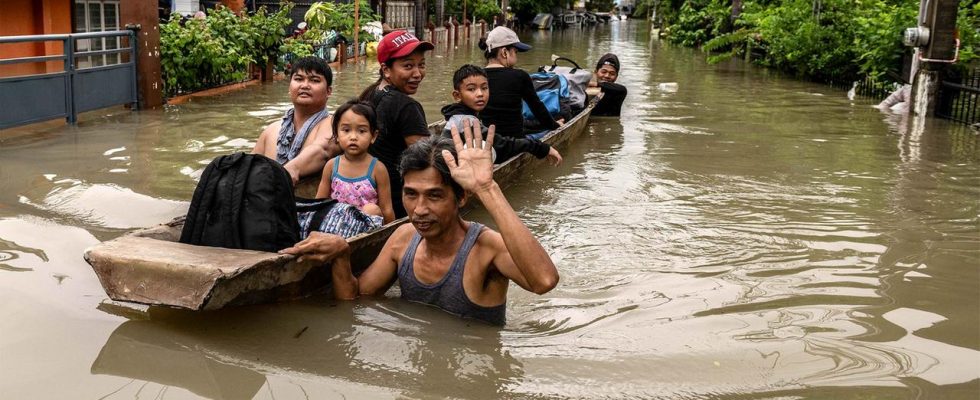Climate change will place greater strain on many economies in the future. Weather disasters cause billions in damage. The Philippines is hit hardest in terms of economic performance.
For many global economies, climate change is also becoming a growing economic threat. The Philippines are hardest hit, as a study by reinsurer Swiss Re shows. The experts calculated the damage caused by weather disasters in relation to economic performance.
As a result, according to modeled estimates, the damage in the Philippines currently accounts for around three percent of the country’s gross domestic product (GDP) – the peak value.
The insurance institute evaluated data on four weather events: floods, tropical cyclones, severe thunderstorms and winter storms in Europe. Together they cause economic damage estimated at around $200 billion per year worldwide. According to Swiss Re, these are model calculations based on figures from 2022.
“Climate change is leading to an increase in serious weather events and is therefore becoming an ever greater economic burden,” said Swiss Re chief economist Jérôme Jean Haegeli. The expert notes that it is therefore all the more important to take adaptation measures.
Prevention is crucial
By far, the Philippines is the country hit hardest, ahead of the USA. According to the study, the USA is in second place with damage amounting to 0.38 percent of GDP, followed by Thailand, Austria and China.
Germany was in 14th place with damage amounting to 0.14 percent of GDP. In absolute terms, the damage in the USA is currently by far the highest. According to the study, it is around 97 billion dollars a year.
The experts also look at the reasons: While the risk of flooding is expected to increase worldwide, tropical cyclones are the main cause of major weather-related economic losses in the USA and in East and Southeast Asia, they say.
As examples of possible adaptation measures, they cite enforcing building regulations, increasing flood protection and monitoring settlements in areas vulnerable to natural hazards.
Ultimately, the share of losses in each country’s GDP will depend on future adaptation, loss reduction and prevention.
Estimates are in the lower range
Swiss Re’s model calculations refer to the entire damage, not just the insured damage. Other weather events such as heat waves were not taken into account. Projections into the future are not possible, said a spokeswoman. Swiss Re analyzed the countries most affected by climate change damage, for which good data is available.
“These estimates are at the lower end of possible economic damage,” the institute reported. “As climate change leads to an intensification of weather events, the potential for losses is also likely to increase.”
In the annual natural catastrophe report, the economists at the reinsurer Munich Re recently came to the conclusion that earthquakes, hurricanes, floods, storms and other natural events would have caused $250 billion in damage worldwide in 2023 and cost 74,000 people their lives.

